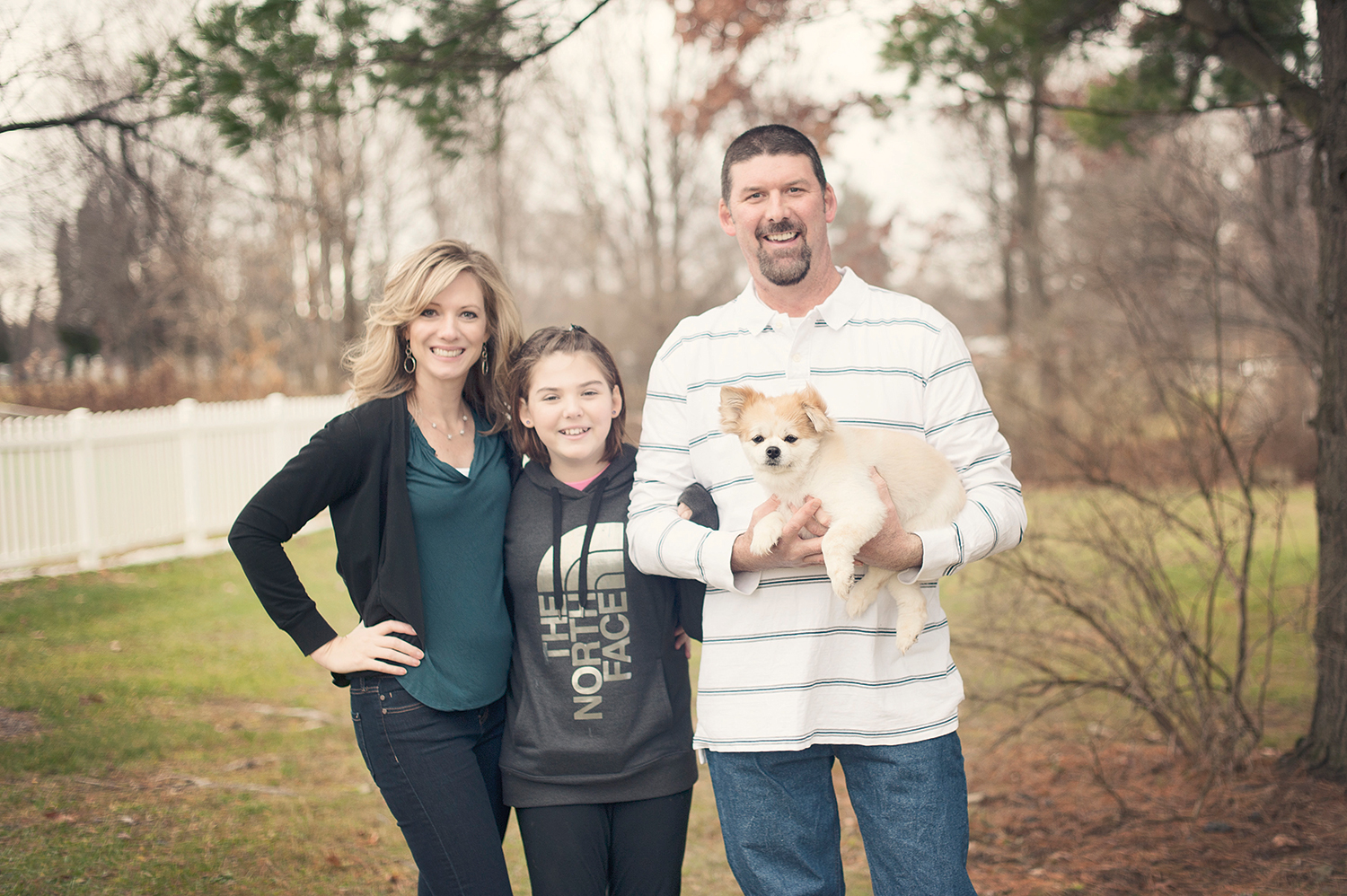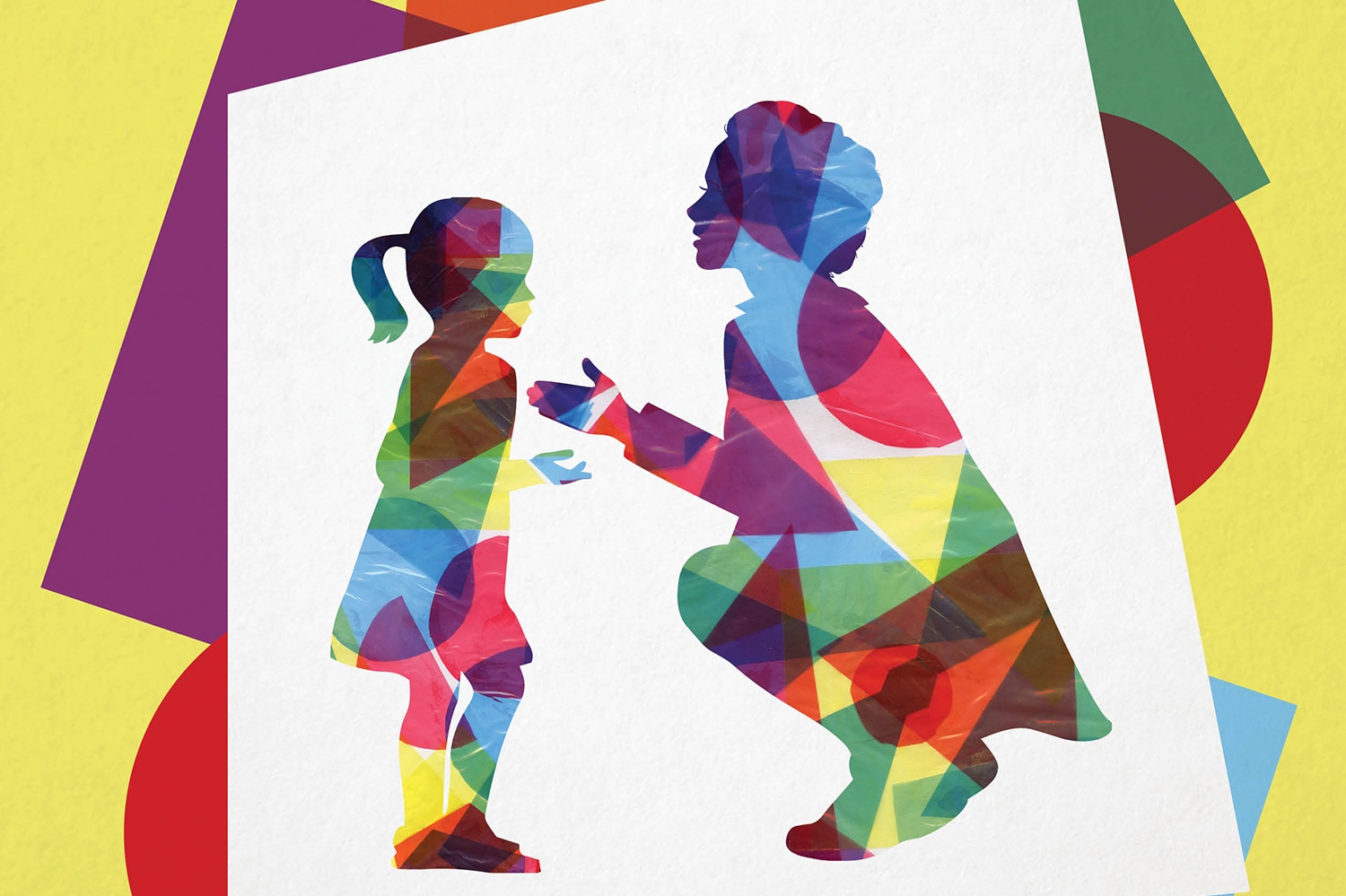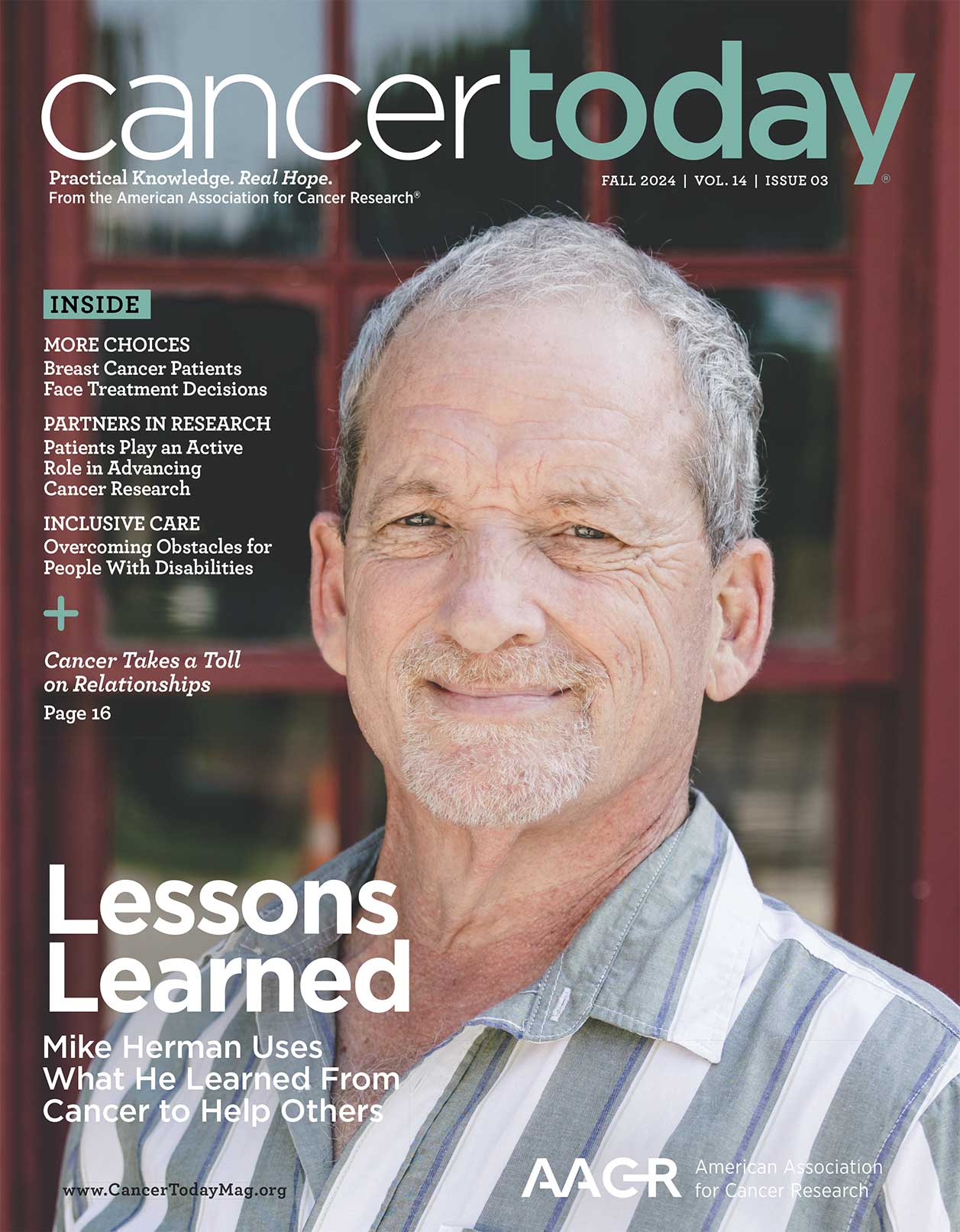EVERYTHING LOOKED fine at Emily Whitehead’s checkup in May 2010. Yet in the weeks that followed, the 5-year-old said her legs were hurting, and her parents noticed bruises, too. At first, they chalked up their daughter’s symptoms to growing pains and childhood scrapes. Then one night, Emily’s aching legs woke her up. The next day, the Philipsburg, Pennsylvania, family returned to their pediatrician. A blood test revealed Emily had acute lymphoblastic leukemia (ALL).
ALL is considered one of the most curable childhood cancers, but that was not always the case. In the 1960s, only 10 percent of children with ALL survived for five years or more; now, nearly 90 percent of children treated with the standard chemotherapy survive long term. For the estimated 10,270 children in the U.S. who will be diagnosed with cancer in 2017, standard treatments, including chemotherapy and radiation, will successfully bring many of them into long-term remission.
“Childhood cancer is often pointed to as a success story, and in many respects, it is,” says Peter C. Adamson, a pediatric hematologist-oncologist at Children’s Hospital of Philadelphia (CHOP). But successes don’t tell the whole story, he says. Between 15 and 20 percent of children with ALL relapse after chemotherapy, and other childhood cancers have not seen a great improvement in survival. Nearly 1,800 children and teens still die each year from cancer, the leading cause of death by disease in this age group in the U.S.
Emily’s leukemia went into remission in the summer of 2010 after a month of chemotherapy. She continued to get monthly chemotherapy and blood tests, but in October 2011, she relapsed while still in treatment. Doctors scheduled her for a bone marrow transplant in February 2012, but she relapsed again three weeks before the scheduled date. Doctors at Penn State Children’s Hospital in Hershey, Pennsylvania, continued to treat her with chemotherapy to prepare her for the bone marrow transplant, but after a month, they concluded that Emily’s cancer was too aggressive. They were out of treatment options.
Unique Challenges
Researchers like Adamson are working to bring new treatments to the children who need them and to better understand childhood cancer by analyzing its genetics.
“Developing new treatments that are targeted has to be a priority for us,” says Adamson. “We’ve taken the drugs that we use today as far as we can take them.”
Adult cancers are different from those found in children, and that can present research and treatment challenges. Adults are usually diagnosed with solid tumors, while the most common childhood cancers are blood cancers, such as leukemia, and brain and spinal cord cancers. The underlying triggers for cancer are also different for children. Some adult cancers have risk factors that accumulate over a lifetime, but for childhood cancers, changes that provide the perfect storm for cancer happen in the child’s very first years or even before birth.
“We normally think of cancer as a disease of old age,” when genetic mutations and lifestyle factors that increase risk have had time to accumulate, says Elaine Mardis, a cancer genomics researcher at the Nationwide Children’s Hospital Institute for Genomic Medicine in Columbus, Ohio. In most childhood cancers, Mardis says, “you don’t find a lot of mutations.” This means only a small number of the new drugs being developed to target mutations in adult cancers may be effective in treating childhood cancers.
To understand what triggers childhood cancer, scientists have started to look at the DNA of children with the disease. In 2010, researchers from Washington University School of Medicine in St. Louis and St. Jude Children’s Research Hospital in Memphis, Tennessee, launched a five-year effort co-led by Mardis to study the genomes of both cancer cells and normal cells in more than 800 children with cancer. The results have shed light on how the cancer genome varies among childhood cancer types and different forms of the same cancer. Research has also uncovered that many childhood cancers feature genes that are fused together to allow the cancer cell to make new proteins, called fusion oncoproteins, that can trigger brain tumors, leukemia, and bone and muscle tumors. These fusion onco-proteins are promising targets for treatments, Mardis says.
“We have a rather good understanding of many of the genomic changes that occur in childhood cancers, but a much more limited understanding of what the changes are when our treatments fail,” says Adamson. For more insights into what makes a child relapse, Adamson and his colleagues launched the Pediatric MATCH trial in July 2017. This trial will sequence the tumor DNA of children whose cancer has not improved or has relapsed after standard therapy. Children whose tumors are a match for treatment will receive one of eight targeted drugs. In the process, researchers will learn more about how each treatment works on genomic variants of the cancer.
“The hope is that doing studies that take us to the next level to understand how these are driving childhood cancers will open the door to potential treatments,” Adamson says.
Researchers discuss surveillance strategies.
In the past, researchers thought heritable cancers—cancers caused by genetic mutations passed from parents to children—were rare. But now, “there’s pretty good evidence that 10 to 15 percent of all children who get cancer … do so because of a heritable predisposition,” says Garrett M. Brodeur, a pediatric oncologist and director of the Cancer Predisposition Program at Children’s Hospital of Philadelphia.
In October 2016, 65 pediatric cancer experts from 11 countries convened in Boston for a Childhood Cancer Predisposition Workshop sponsored by the American Association for Cancer Research (AACR) and led by Brodeur to develop consensus on preliminary surveillance protocols for more than 50 known inherited syndromes that predispose a child to cancer. (The AACR publishes Cancer Today.) Eighteen position papers describing the guidelines that emerged from the Boston meeting were published in summer and fall 2017 in the AACR journal Clinical Cancer Research. They are freely available so that researchers, health care providers and families can access them.
“The genetics of an individual probably play a more important role than we had appreciated in the past, so it is important to be aware of your family history,” Brodeur says. For those who do have a hereditary form of cancer or cancer predisposition, “it’s very important to follow surveillance, because there is high likelihood that tumors will be detected earlier and be more treatable.”
Immunotherapy for Children
Cancer immunotherapy enhances the ability of the body’s immune system to attack cancer cells. Checkpoint inhibitors, a group of immunotherapy drugs approved by the U.S. Food and Drug Administration (FDA) to treat adult cancers, appear to be less effective in children, at least when used alone. But other types of immunotherapy for children have had notable successes.
For Emily, doctors at CHOP in Philadelphia told her parents about a new trial testing an immunotherapy that, at the time, had only been used in adults: CAR-T cell therapy.
CAR-T cells, or chimeric antigen receptor T cells, are cells from a person’s immune system that are modified to recognize and attack cancer cells. In the type of ALL Emily had, a person’s B cells—immune cells that normally help the body fight infection—become cancerous. Nearly all B cells have a protein on their surface called CD19. As part of Emily’s trial, doctors removed some of her T cells and re-engineered them to identify the CD19 protein. Once they identified the protein, the T cells would target the cancerous B cells for destruction.

Kari, Emily and Tom Whitehead stand with their dog, Lucy, outside their home in Philipsburg, Pennsylvania. Photo courtesy of Kari Whitehead
Allowing their daughter to be the first child to receive this treatment “worried us a little,” says Kari Whitehead, Emily’s mother. “But we knew we had to try something different, and this was the something different we were looking for.” In March 2012, doctors at CHOP removed some of Emily’s T cells and re-engineered them in the lab. The next month, they infused the new cancer-seeking CAR-T cells into Emily.
At first, things looked bleak. Adults had often experienced flu-like symptoms after receiving the re-engineered cells. In Emily’s case, she became so sick that she was admitted to the pediatric intensive care unit. But over the next few weeks, her condition began to improve. Twenty-three days after Emily received the re-engineered T cells, doctors checked for evidence of leukemia in her bone marrow. “The T cells had worked,” says Kari Whitehead. Emily showed no signs of cancer.
Now, investigators are looking at whether CAR-T cells can help treat children with other types of cancer. For example, researchers at Texas Children’s Hospital in Houston plan to open a clinical trial in 2018 that modifies T cells to attack cancer cells in solid tumors in children, including tumors in the liver and kidney.
Yet CAR-T cell therapy doesn’t work in every child. Though as many as 90 percent of children with ALL treated with CAR-T cells reach remission, 10 percent or so don’t respond to the treatment, says Shannon Maude, a pediatric oncologist at the CHOP Cancer Center. Maude and her colleagues, who are conducting clinical trials for CAR-T cells, have begun to combine T cell therapy with other therapies that support the immune system to help kids who haven’t responded fully to CAR-T cells. Early results, presented at the 2017 meeting of the American Society of Clinical Oncology (ASCO), suggest that CAR-T cells can be safely combined with a checkpoint inhibitor, which may help CAR-T cells function better. “This is not a therapy that right now may be something that will benefit every patient,” Maude says, “but it’s very encouraging that we’re learning about other ways to target leukemia that is not responding to standard approaches.”
Another type of cancer has presented a difficult treatment challenge when children relapse: neuroblastoma. More than 650 children in the U.S., most under 5 years old, are diagnosed with the disease each year. Neuroblastoma tumors can appear in the neck, chest, adrenal glands and other parts of the abdomen. About half of children who have this disease have a high-risk form that results in widespread cancer and poor outcomes, even with intense treatments that can include chemotherapy, surgery, radiation and stem cell transplants. Children with the disease who respond to these treatments often relapse. Once they do, there is typically no cure.
Monoclonal antibodies have been studied in the treatment of neuroblastoma. These antibodies can travel through the body and tag cancer cells for destruction by the immune system. In 2010, researchers published the results of a phase III clinical trial in the New England Journal of Medicine that looked at use of a monoclonal antibody called Unituxin (dinutuximab) in a group of 226 children with high-risk neuroblastoma who had already received chemotherapy, stem cell transplants and radiation therapy. Two years later, 66 percent of children who were treated with a combination of Unituxin and therapies that are thought to bolster the patients’ immune response had not had their disease progress, compared with 46 percent of children who received an oral retinoid, a standard maintenance treatment. In March 2015, the FDA approved Unituxin for use as a first-line treatment in children with high-risk neuroblastoma.
A network brings kids together for studies.
The relative rarity of childhood cancers compared to adult ones presents a challenge for researchers struggling to find a critical mass of children with cancer to enroll in trials and develop new standards of care. A single cancer center might see only one or two cases of a rare cancer in children each year. That’s where the Children’s Oncology Group (COG) can help. COG links more than 200 children’s hospitals, research institutions and cancer centers worldwide to develop clinical trials for children with cancer.
Eric Lowe, a pediatric oncologist at Children’s Hospital of the King’s Daughters in Norfolk, Virginia, is studying anaplastic large cell lymphoma (ALCL), but there are only about 50 children diagnosed with ALCL in the U.S. each year. Running a trial across the COG network gives Lowe and his colleagues more patients to study and offers children and their parents more options for the latest treatments. Since 2013, Lowe has enrolled 110 patients in his ALCL trial. They are being treated with standard chemotherapy and either an antibody-drug conjugate or a targeted therapy that blocks tumor growth.
Trying to Reduce Treatment Side Effects
The effects of cancer and its treatment can reverberate in children years later. Childhood cancer survivors are at increased risk for other cancers, cardiovascular issues, brain and nervous system problems, and other maladies. “Giving too much therapy can be as bad as not giving enough because of the late effects and the toxicity,” says Crystal Mackall, a pediatric oncologist and the associate director of the Stanford Cancer Institute in Palo Alto, California.
Advances in treatment and in screening survivors throughout their lives have improved the health and quality of life of childhood cancer survivors. A study presented at the ASCO meeting in 2017 analyzed data for more than 23,000 childhood cancer survivors from the 1970s through the 1990s and found that the rate of severe health issues after treatment decreased over the decades. Nearly 13 percent of those diagnosed with childhood cancer in the 1970s had severe health issues in the 15 years following diagnosis, while less that 9 percent of those treated for childhood cancer in the 1990s experienced severe health issues. Targeted treatments and immunotherapies that researchers are now working on to treat children may result in still fewer of these late effects. Immunotherapy drugs in the short term “can be fairly toxic,” says Mackall, “but we remain optimistic that the long-term effects are going to be less than [those of] chemotherapy or radiation.”
Five years after her treatment with CAR-T cells, Emily is showing no signs of cancer. The 12-year-old still has CAR-T cells circulating in her blood that can kill both cancerous and healthy B cells, so every two weeks, she has an infusion of immunoglobulin therapy that helps protect her from infections. But she has had no side effects since her initial reaction to the CAR-T treatment in 2012.
On Aug. 30, 2017, the FDA approved Kymriah (tisagenlecleucel), the treatment Emily received as the first pediatric patient in a CAR-T cell clinical trial. Now that it has been approved, more children will be able to benefit from the therapy, Kari Whitehead says. Emily also has high hopes. In an interview with ABC News the day the FDA approved the treatment, she said, “I think it’s really exciting, because the treatment that I got, other kids will be able to have the same treatment and have the same outcome that I did.”
Cancer Today magazine is free to cancer patients, survivors and caregivers who live in the U.S. Subscribe here to receive four issues per year.





